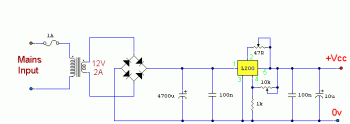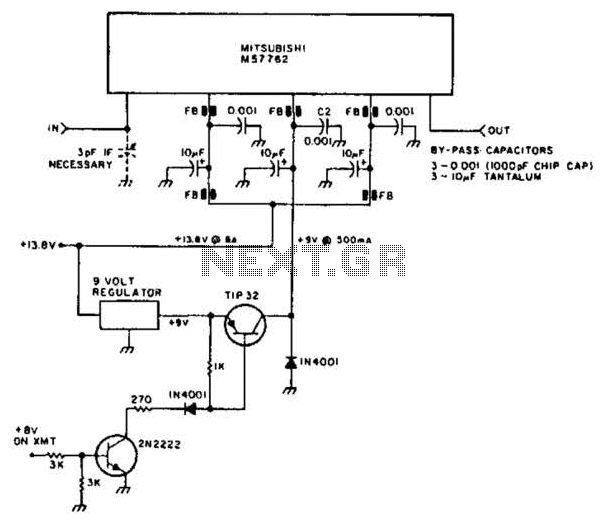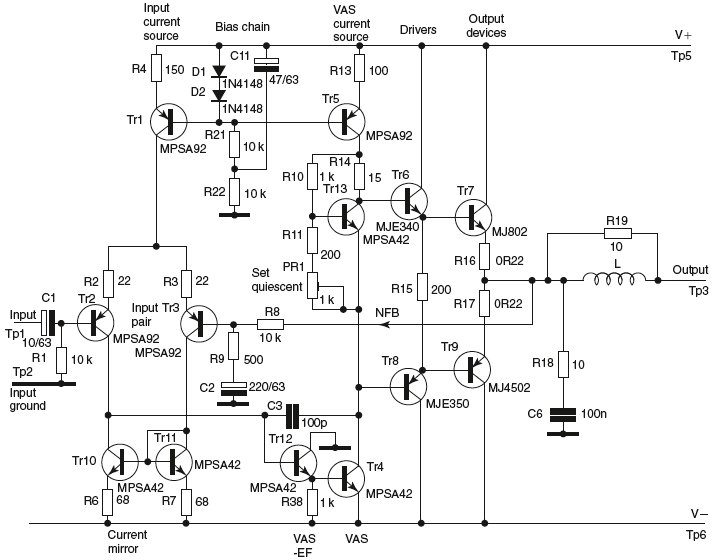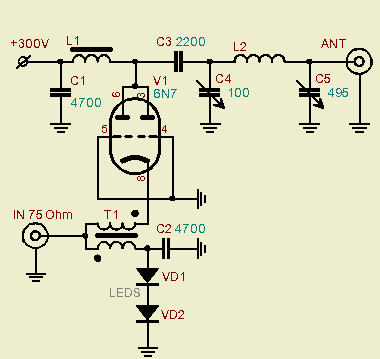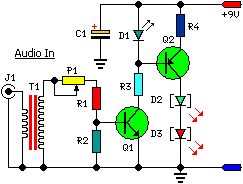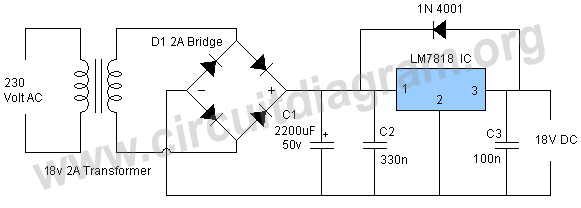
power amplifier 60w8
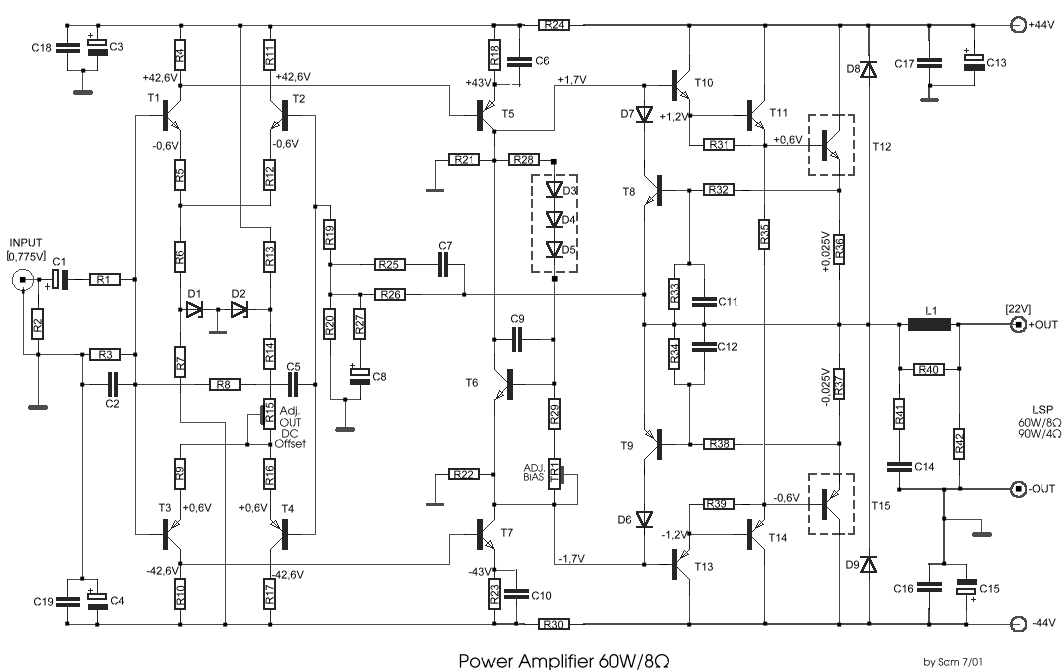
This circuit was designed and manufactured in the 1980s. Since then, it has operated without issues. There are no significant constructional challenges, aside from the usual considerations: ensuring the appropriate power supply voltage, selecting a suitable heatsink, and properly matching the driver transistors.
The circuit in question features a robust design that has proven reliable over decades of operation. The primary focus during its development was on ensuring stable performance and longevity. Key components include a power supply that must be carefully selected to match the circuit's voltage requirements, which is critical for maintaining functionality and preventing damage.
The choice of heatsink is equally important, as it must effectively dissipate heat generated by the circuit during operation. An inadequate heatsink can lead to overheating, which may compromise the integrity of the components and reduce the overall lifespan of the circuit.
Driver transistors play a crucial role in the circuit's performance. They must be matched correctly to ensure optimal operation, as mismatched transistors can lead to inefficiencies and potential failure. The design likely incorporates feedback mechanisms to stabilize the operation of these transistors, further enhancing the reliability of the circuit.
Overall, the circuit exemplifies sound engineering principles from its era, focusing on durability and ease of maintenance, making it a valuable design for applications requiring long-term reliability.This circuit was designed and manufactured the `80`s. From then it works without problem. It does not present any particular constructional problem, beyond known: the attention in the provided force of power supply - choice suitable heatsink and good matching of drivers transistor.. 🔗 External reference
The circuit in question features a robust design that has proven reliable over decades of operation. The primary focus during its development was on ensuring stable performance and longevity. Key components include a power supply that must be carefully selected to match the circuit's voltage requirements, which is critical for maintaining functionality and preventing damage.
The choice of heatsink is equally important, as it must effectively dissipate heat generated by the circuit during operation. An inadequate heatsink can lead to overheating, which may compromise the integrity of the components and reduce the overall lifespan of the circuit.
Driver transistors play a crucial role in the circuit's performance. They must be matched correctly to ensure optimal operation, as mismatched transistors can lead to inefficiencies and potential failure. The design likely incorporates feedback mechanisms to stabilize the operation of these transistors, further enhancing the reliability of the circuit.
Overall, the circuit exemplifies sound engineering principles from its era, focusing on durability and ease of maintenance, making it a valuable design for applications requiring long-term reliability.This circuit was designed and manufactured the `80`s. From then it works without problem. It does not present any particular constructional problem, beyond known: the attention in the provided force of power supply - choice suitable heatsink and good matching of drivers transistor.. 🔗 External reference
